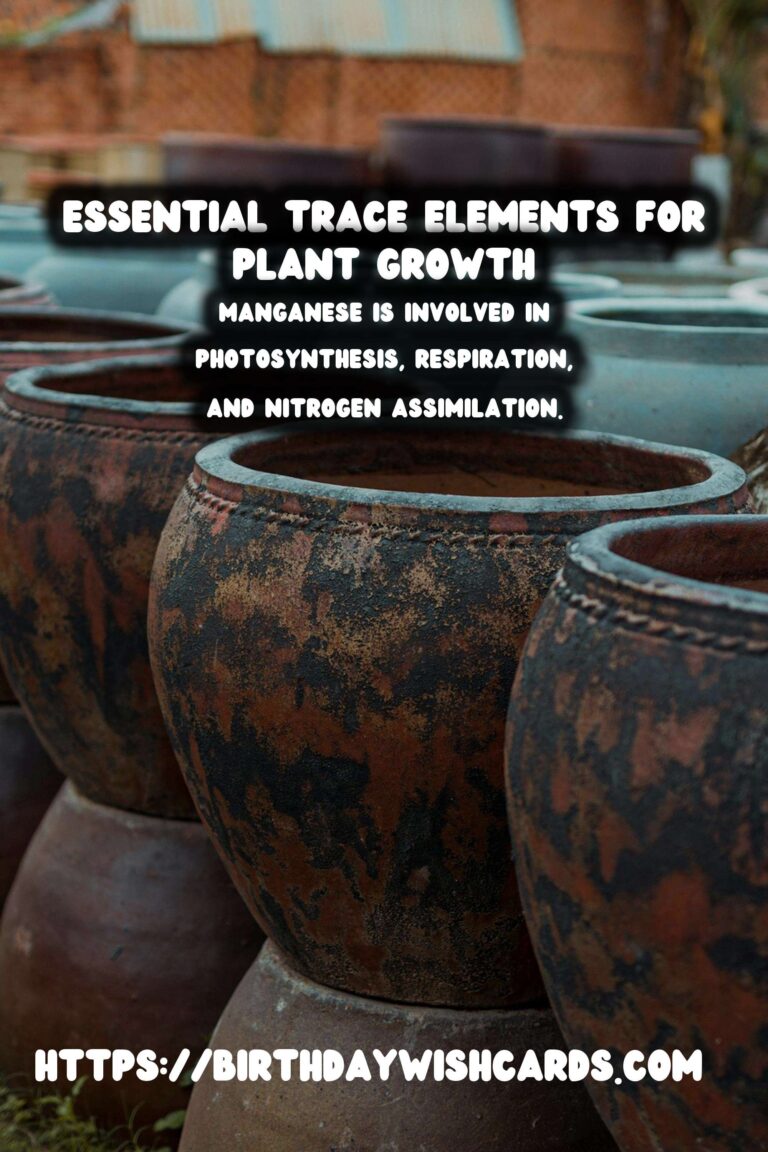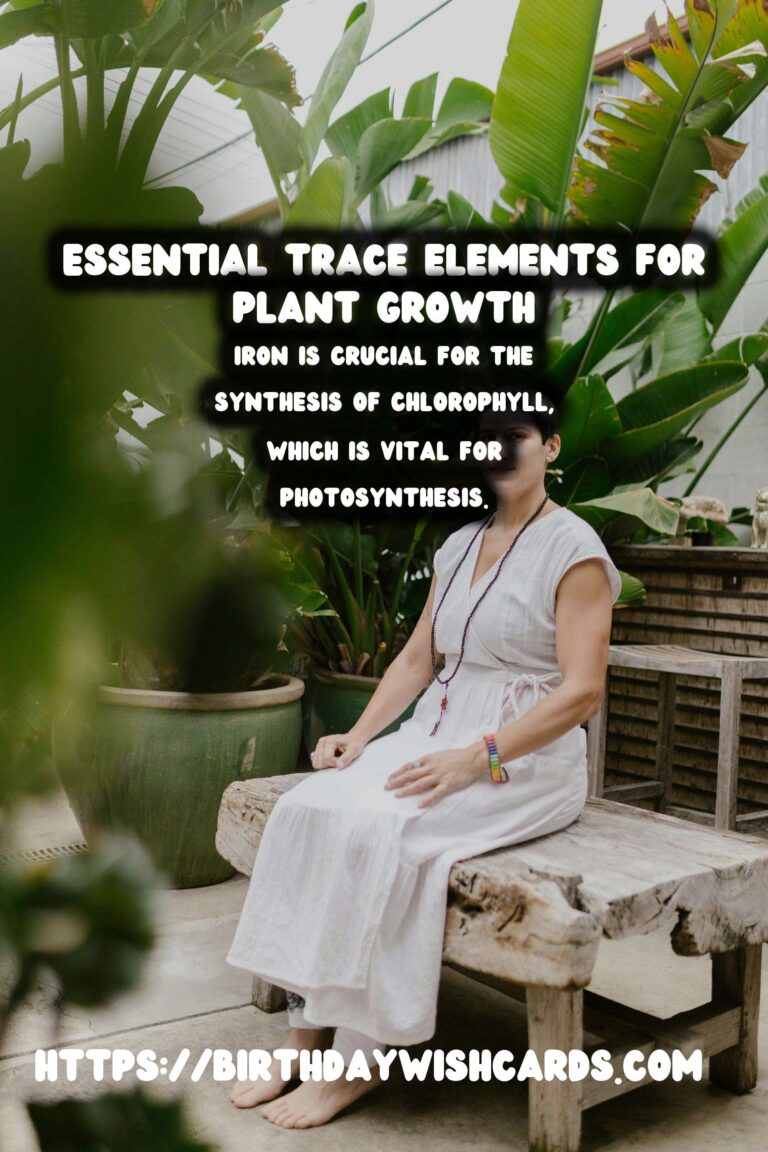
Plants, like all living organisms, require a variety of nutrients to grow and thrive. While macronutrients such as nitrogen, phosphorus, and potassium often receive the most attention, trace elements—also known as micronutrients—are equally essential for plant health. These trace elements, though needed in smaller quantities, play crucial roles in various physiological and biochemical processes within plants.
What Are Trace Elements?
Trace elements are nutrients required by plants in minute amounts. Despite their small required quantity, their impact on plant health is significant. The primary trace elements essential for plant growth include iron (Fe), manganese (Mn), zinc (Zn), copper (Cu), molybdenum (Mo), boron (B), chlorine (Cl), and nickel (Ni). Each of these elements has specific functions in plant development and metabolic processes.
The Role of Trace Elements
Iron (Fe)
Iron is crucial for the synthesis of chlorophyll, which is vital for photosynthesis. It also plays a role in enzyme functions related to energy transfer, nitrogen reduction and fixation, and lignin formation. A deficiency in iron often results in chlorosis, where leaves turn yellow due to reduced chlorophyll production.
Manganese (Mn)
Manganese is involved in photosynthesis, respiration, and nitrogen assimilation. It activates several important metabolic processes and enzymes. Manganese deficiency can lead to interveinal chlorosis, similar to iron deficiency, but with different patterns.
Zinc (Zn)
Zinc is essential for the synthesis of certain proteins and the regulation of growth hormones. It also plays a role in internode elongation and leaf expansion. Zinc deficiency is often seen as stunted growth and small leaves.
Copper (Cu)
Copper helps with photosynthesis, respiration, and the formation of lignin in plant tissues. Deficiency in copper can cause wilting and distortion of young leaves and stems.
Molybdenum (Mo)
Molybdenum is essential for the reduction of nitrates to ammonia and is also involved in nitrogen fixation. Deficiency symptoms include pale leaves and stunted growth.
Boron (B)
Boron plays a key role in cell wall formation and the stability of cell membranes. It is also involved in the transport of sugars and the regulation of hormone levels. Boron deficiency can cause brittle and deformed plant tissues.
Chlorine (Cl)
Chlorine is involved in photosynthesis, particularly in the process of water splitting. Although deficiencies are rare, they can lead to wilting and chlorosis.
Nickel (Ni)
Nickel is required for the activation of the enzyme urease in plants, which is critical for nitrogen metabolism. Deficiency in nickel is rare but can cause a buildup of toxic urea in plants.
Ensuring Adequate Trace Element Supply
To ensure that plants receive sufficient trace elements, gardeners and farmers often use soil amendments, foliar sprays, and fertilizers specifically formulated with micronutrients. Soil testing can identify deficiencies, allowing for targeted supplementation. Organic matter addition can also enhance the availability of trace elements in the soil.
Conclusion
Understanding the importance of trace elements in plant nutrition is crucial for achieving optimal plant growth and health. While required in small amounts, these nutrients have a massive impact on plant physiological functions and overall vitality. By ensuring a balanced supply of trace elements, gardeners and farmers can enhance plant resilience, productivity, and quality.
Trace elements, though needed in smaller quantities, play crucial roles in various physiological and biochemical processes within plants. The primary trace elements essential for plant growth include iron, manganese, zinc, copper, molybdenum, boron, chlorine, and nickel. Iron is crucial for the synthesis of chlorophyll, which is vital for photosynthesis. Manganese is involved in photosynthesis, respiration, and nitrogen assimilation. To ensure that plants receive sufficient trace elements, gardeners and farmers often use soil amendments, foliar sprays, and fertilizers.
#PlantNutrients #TraceElements #Gardening #PlantGrowth #Horticulture

